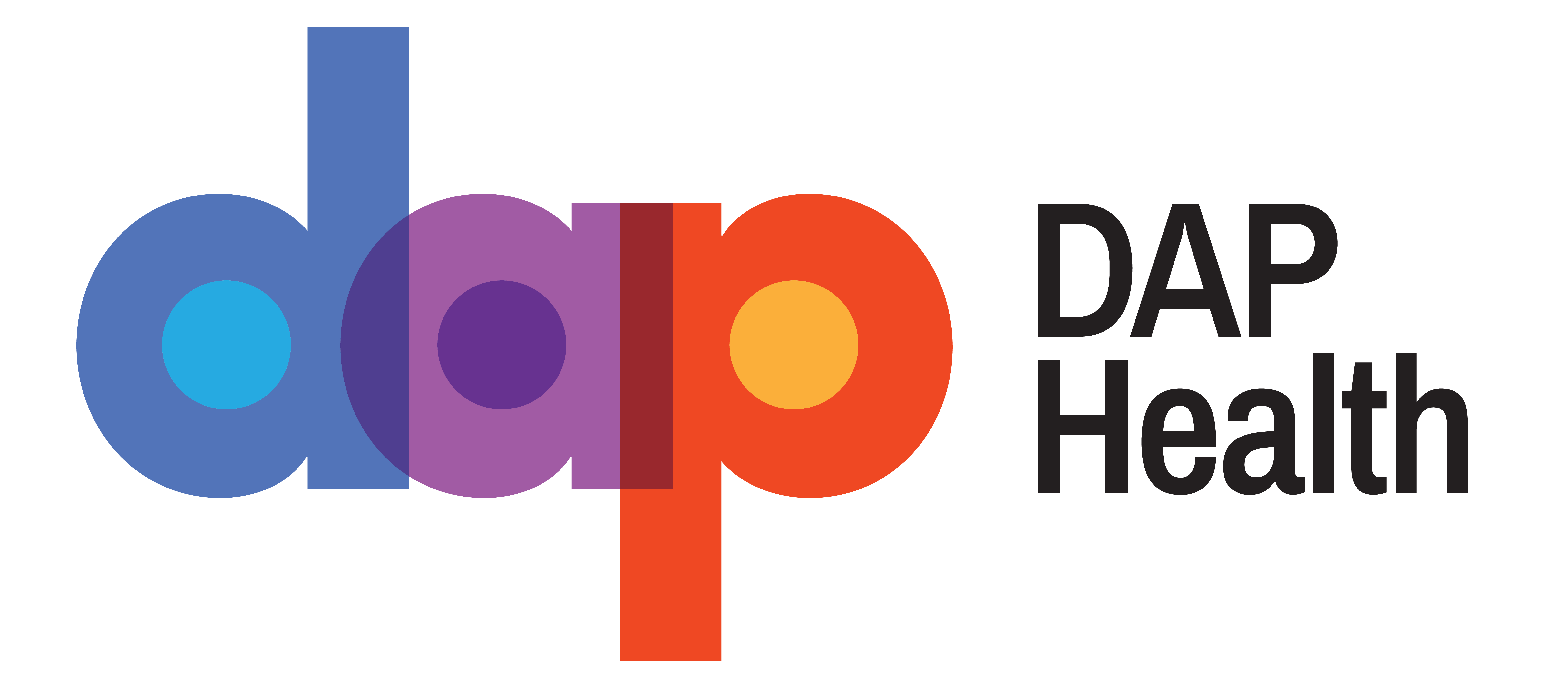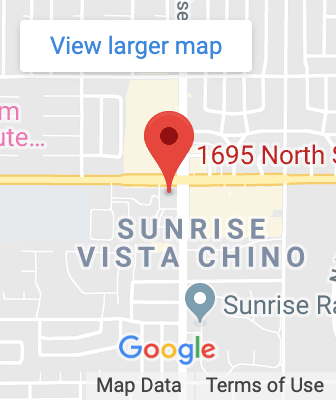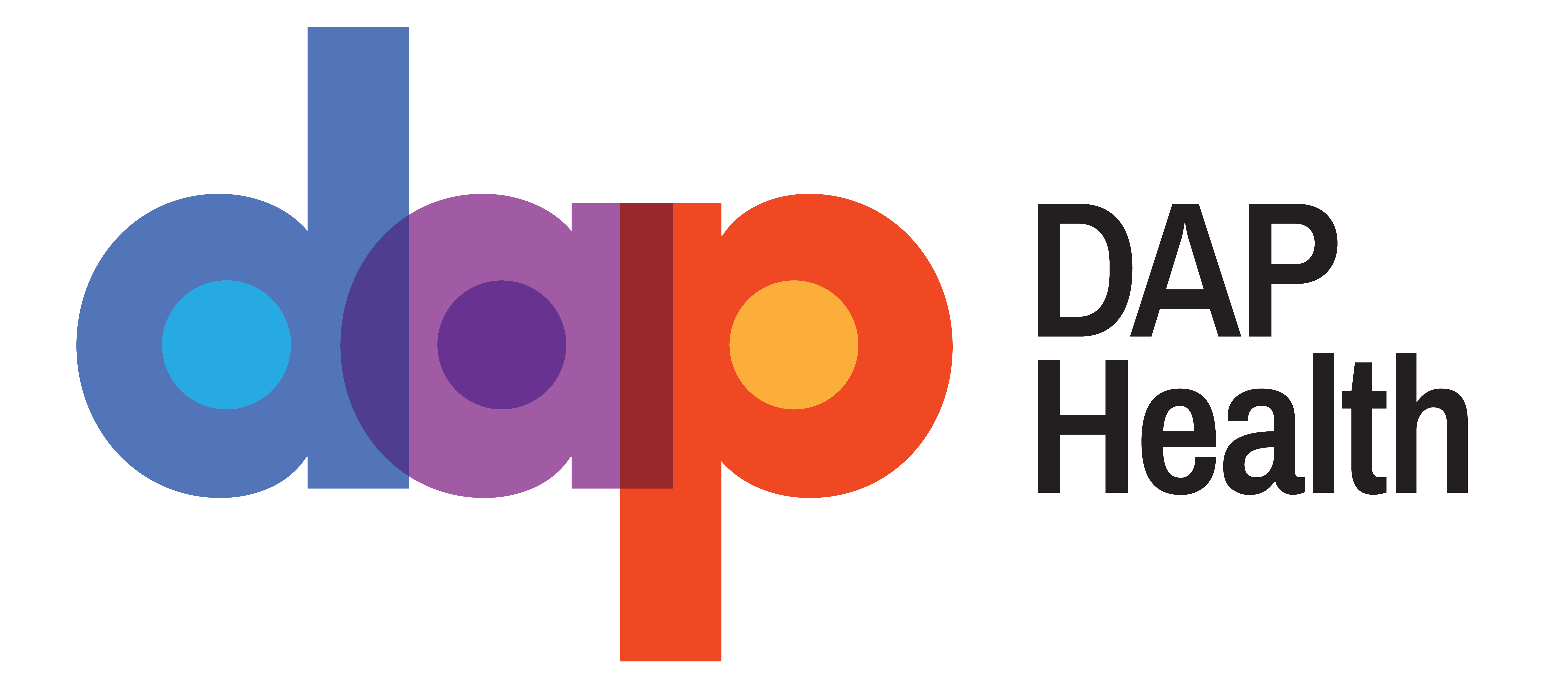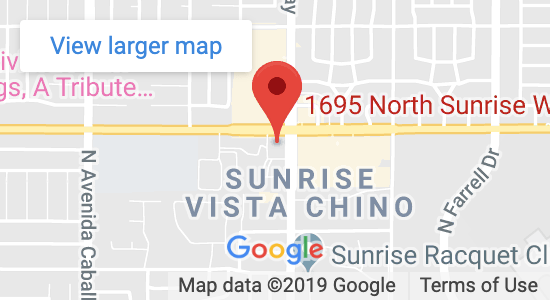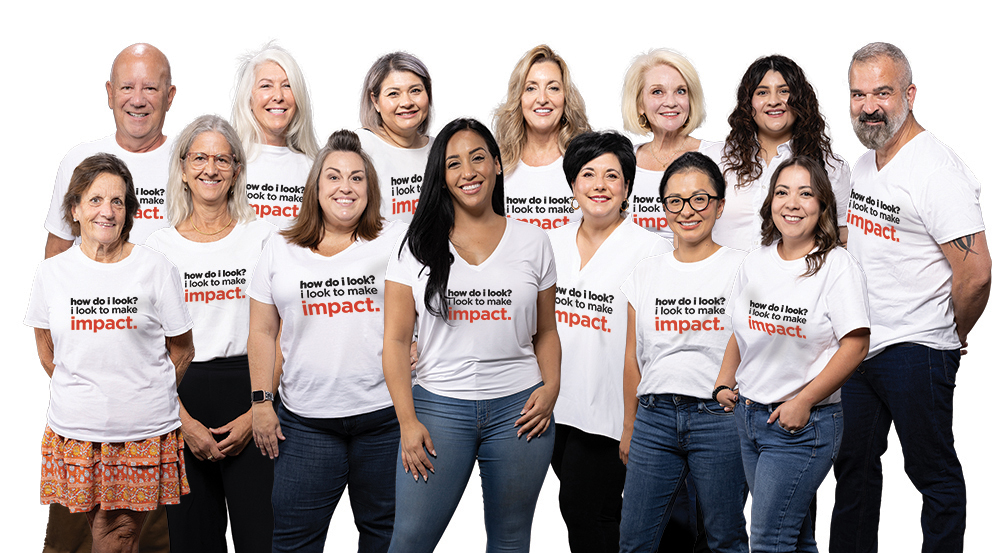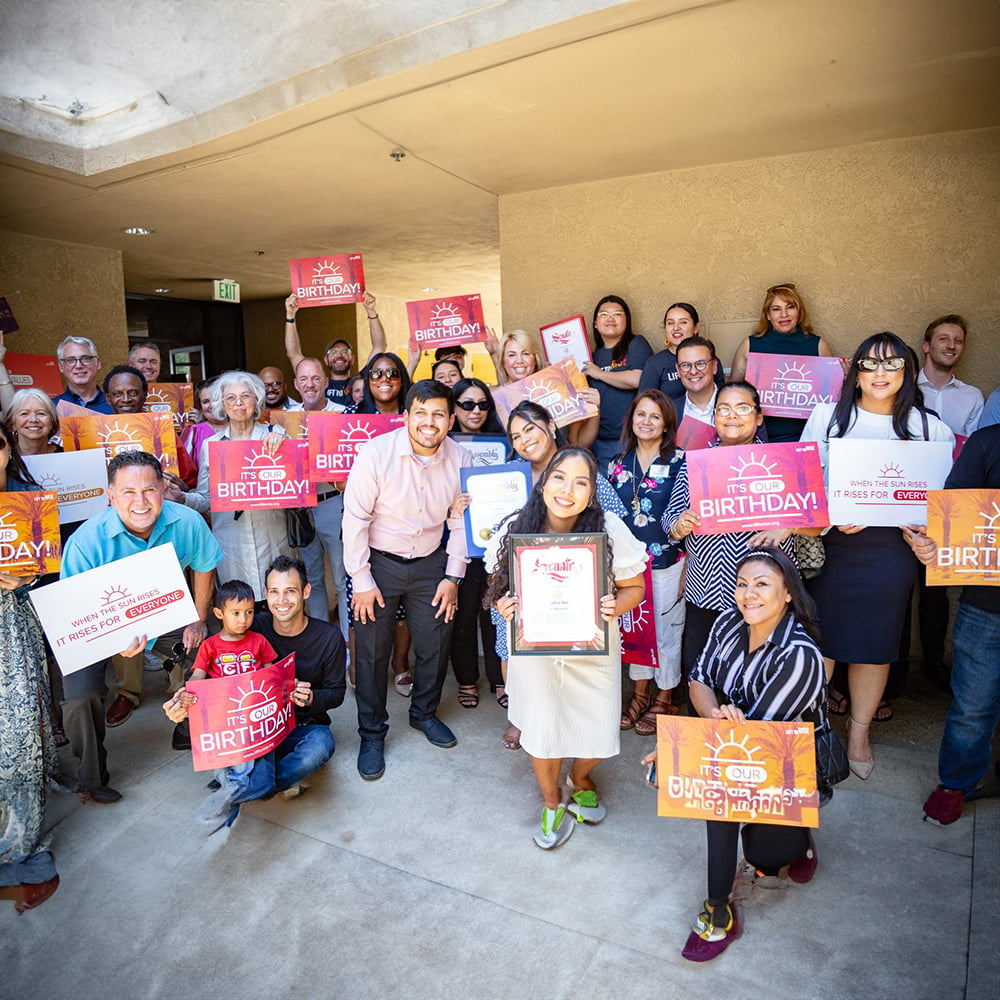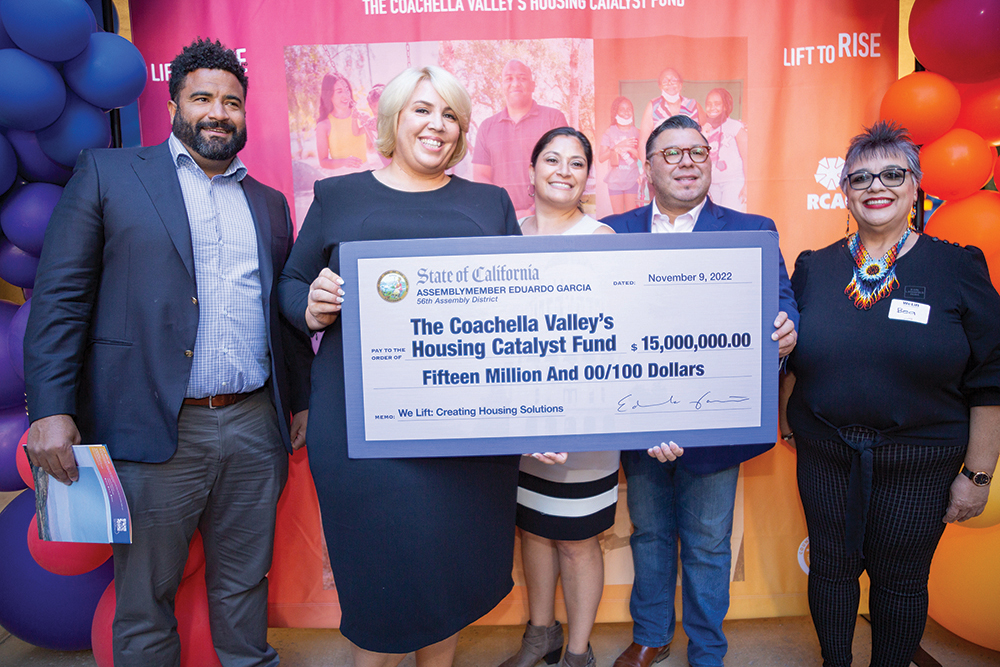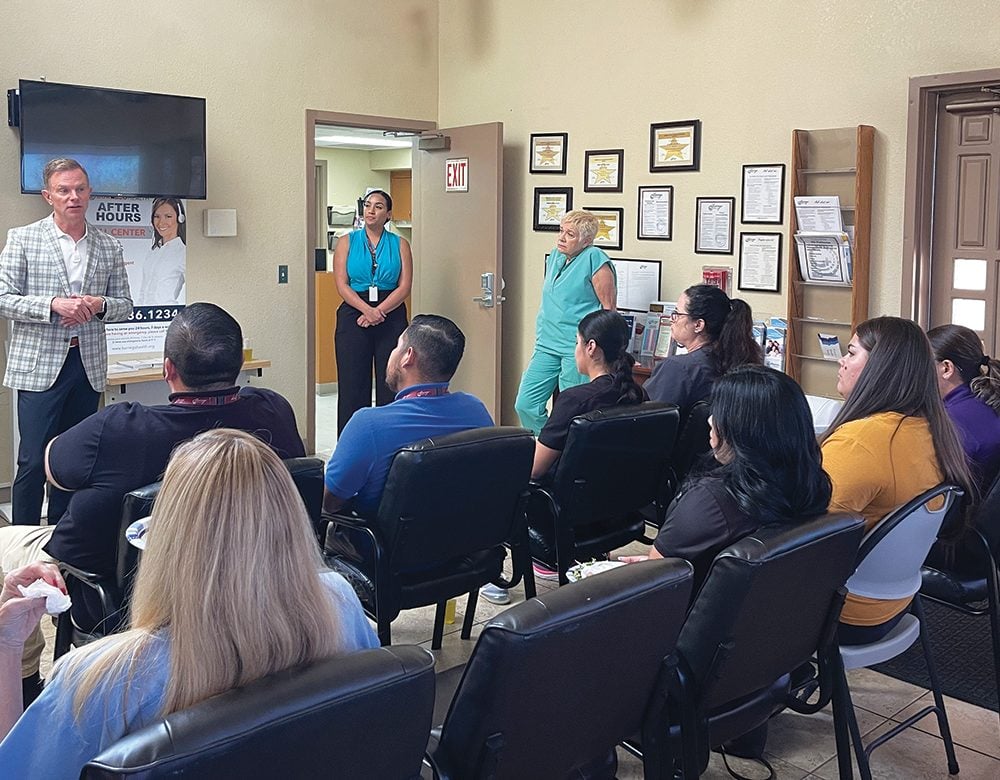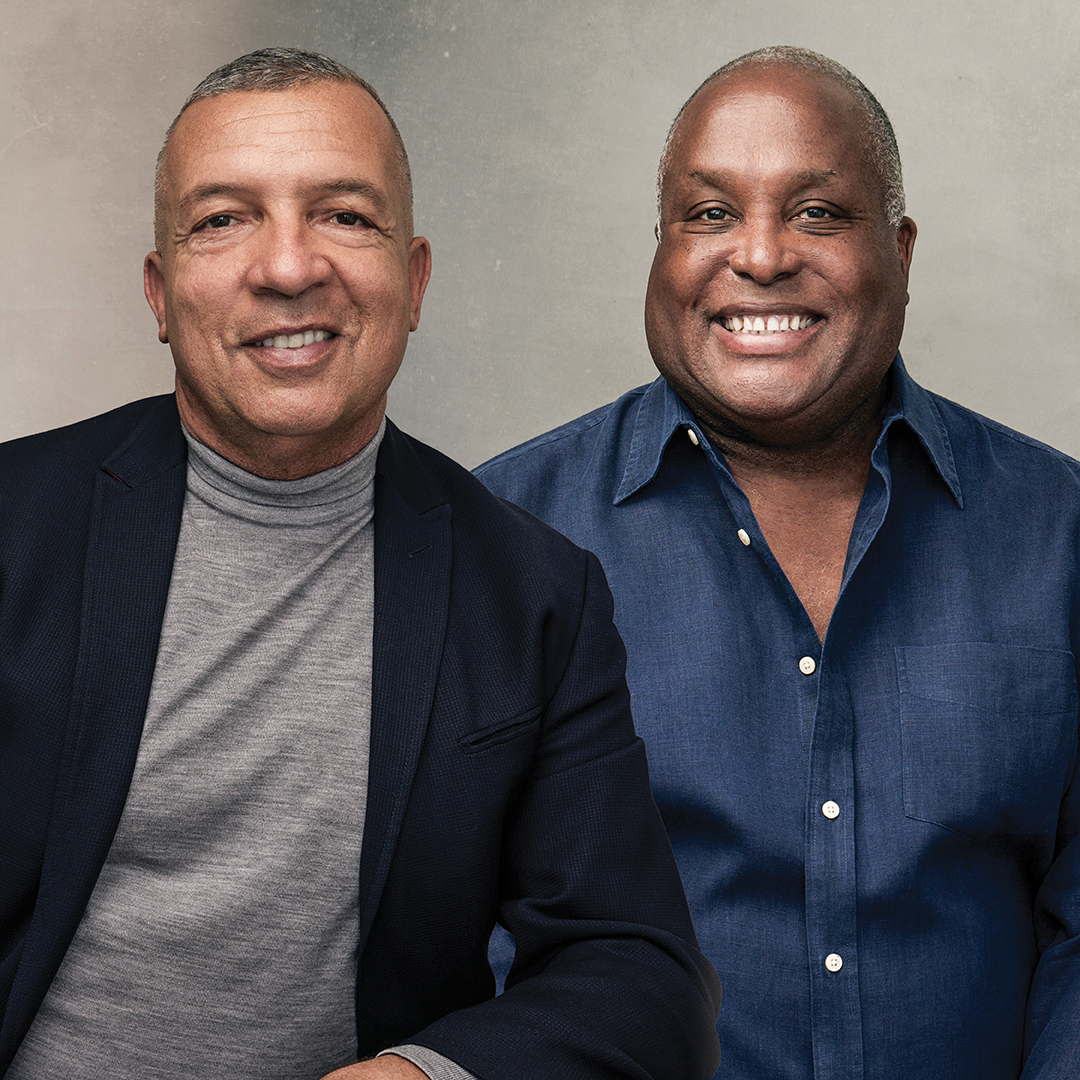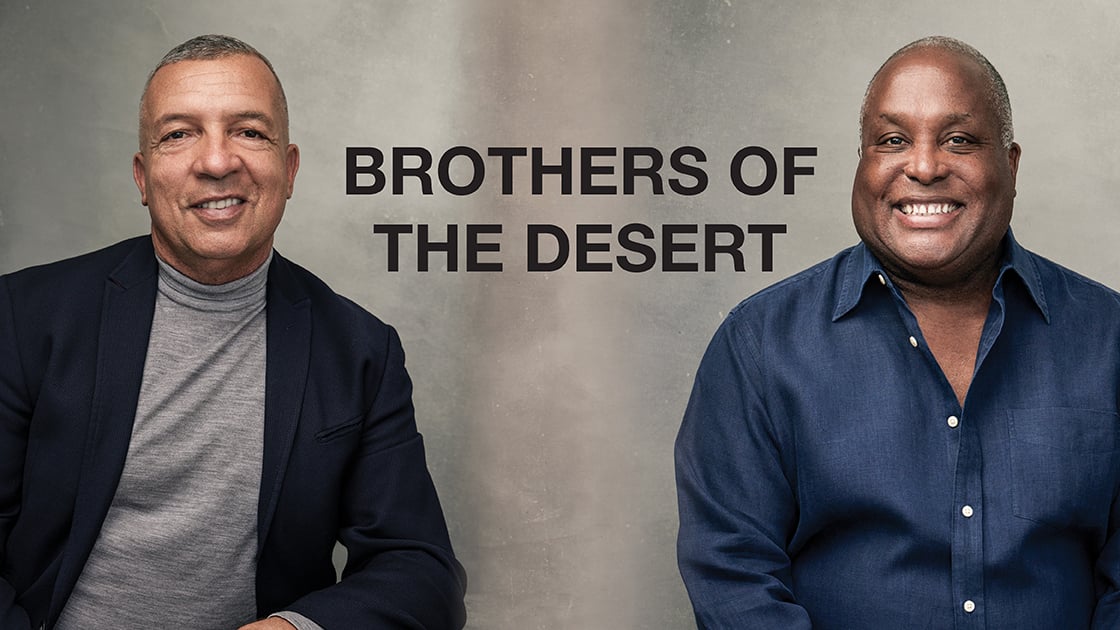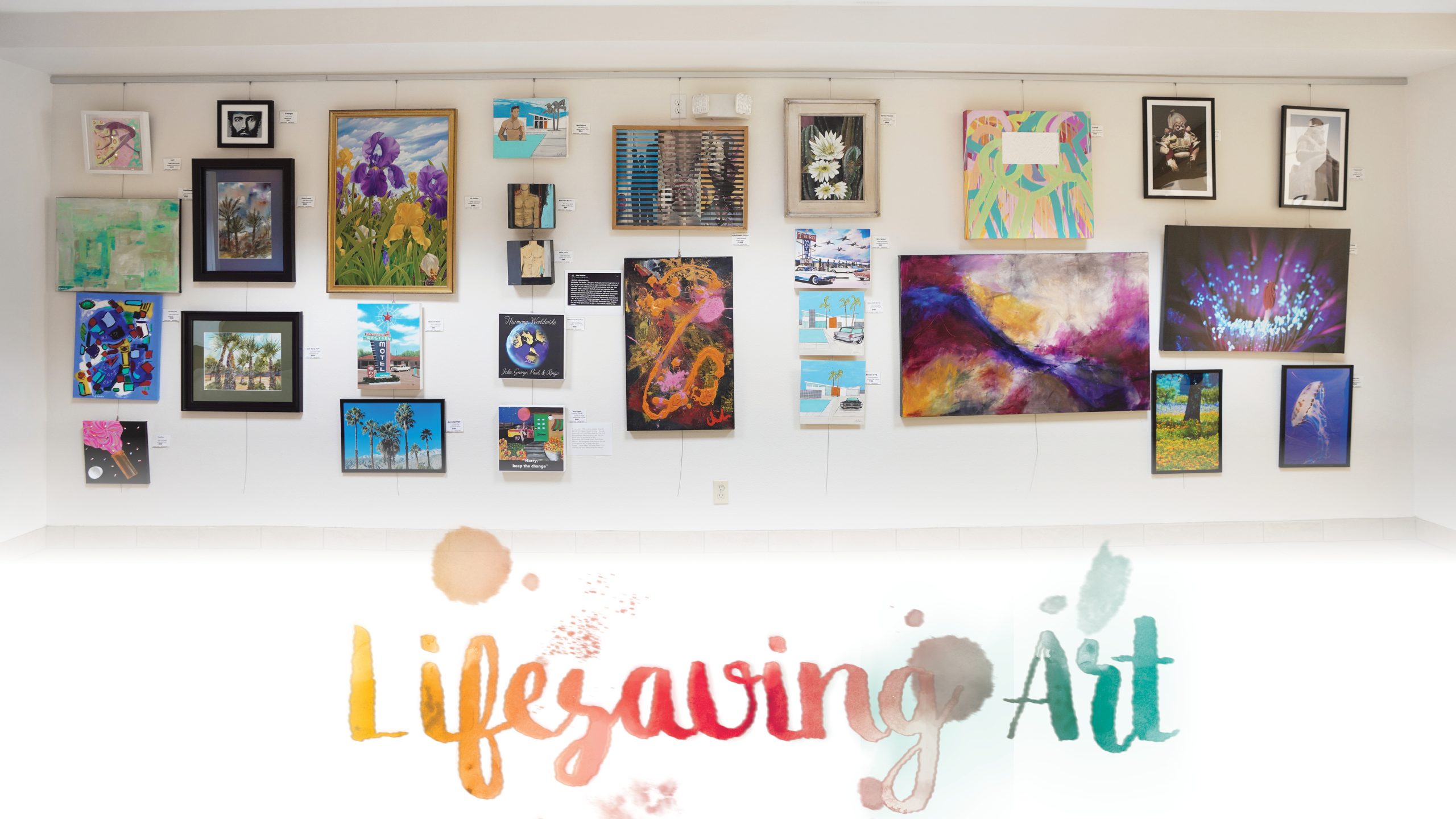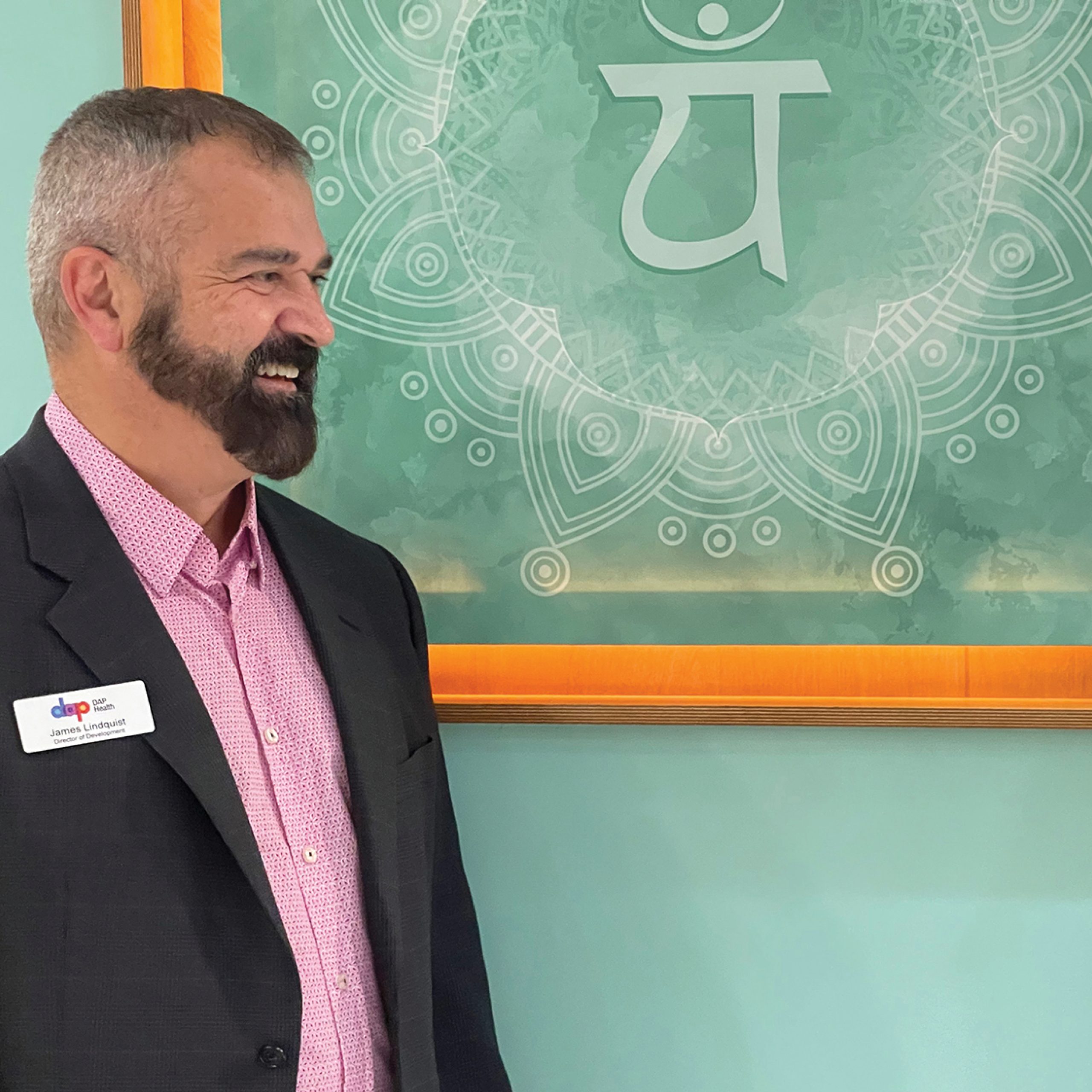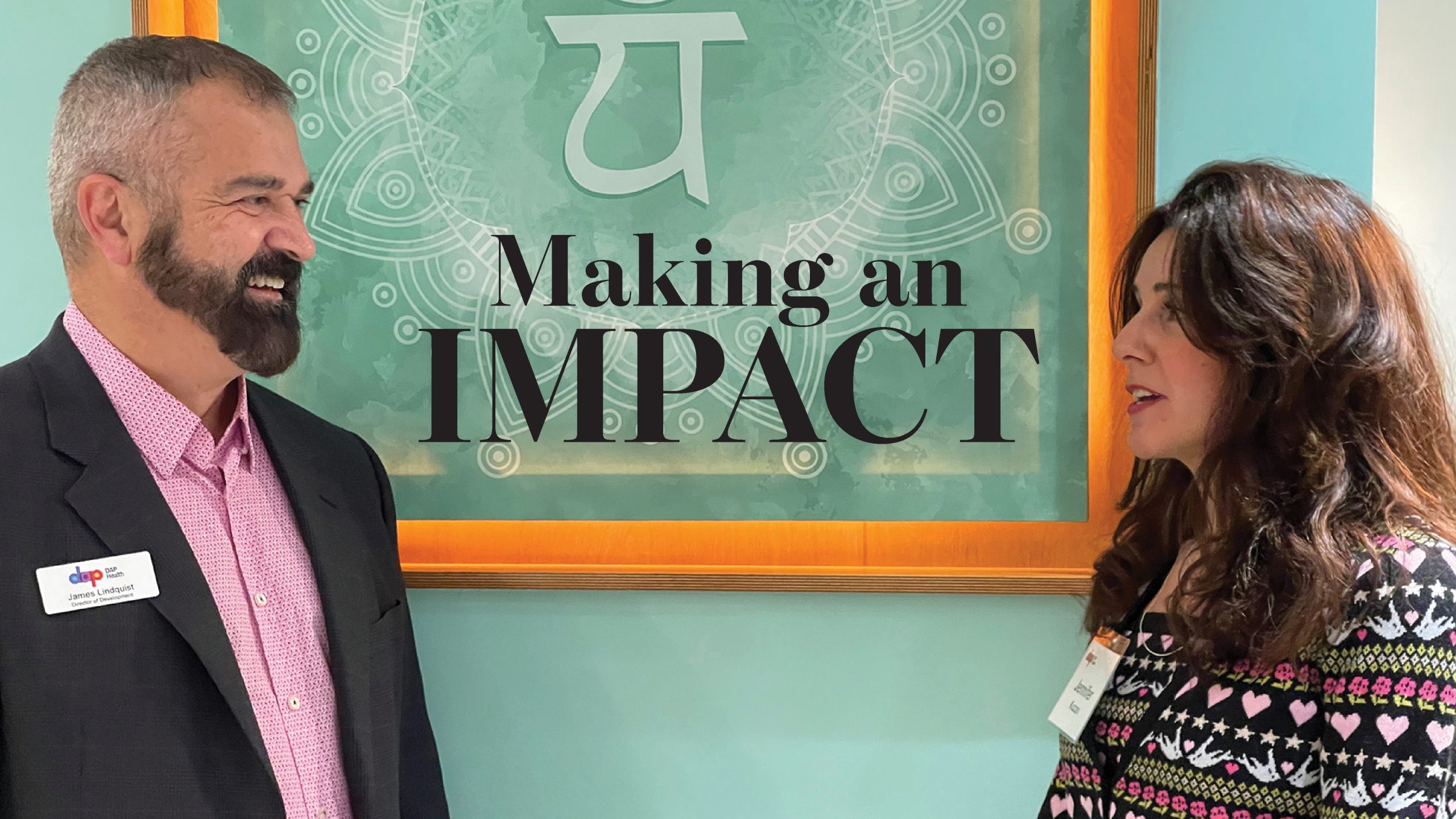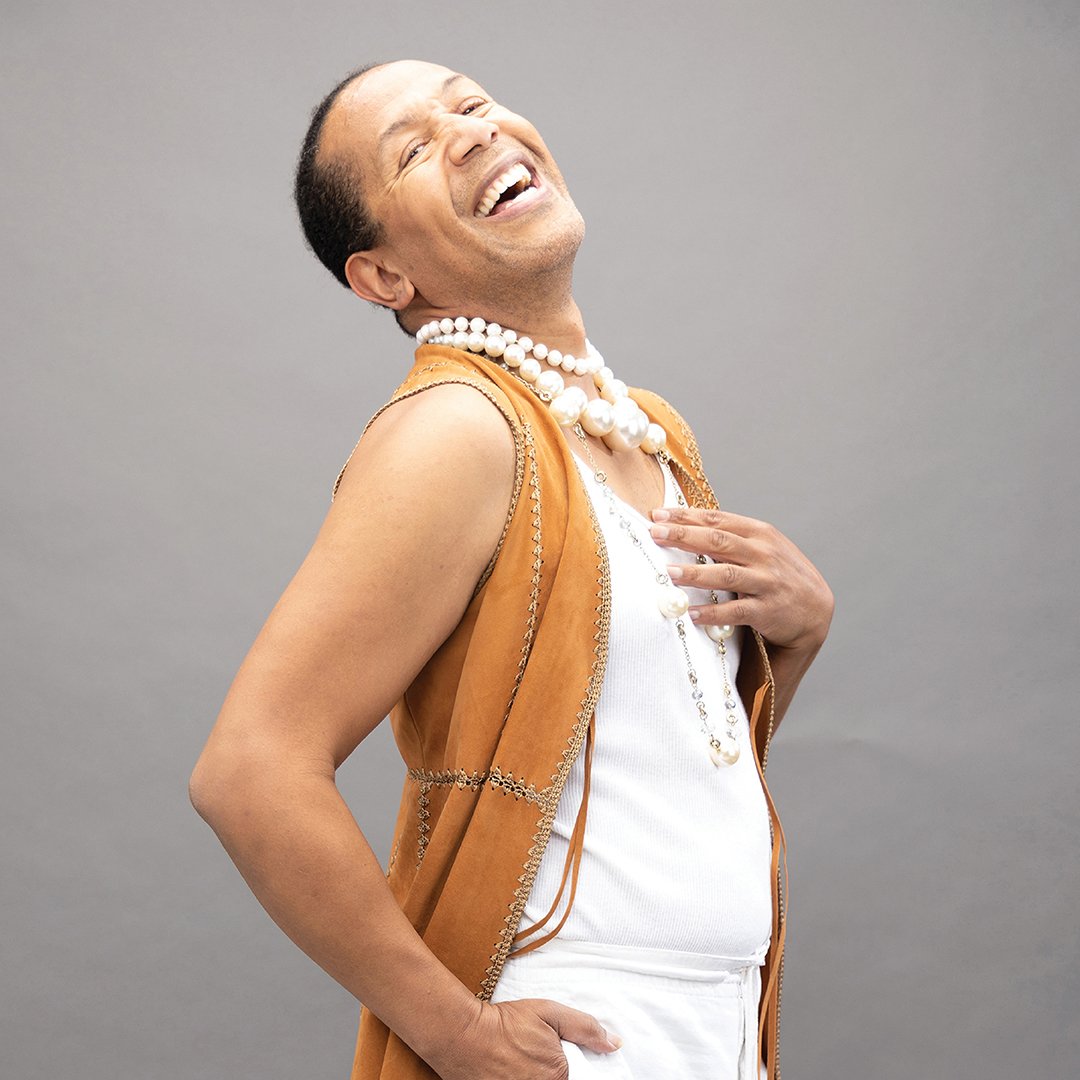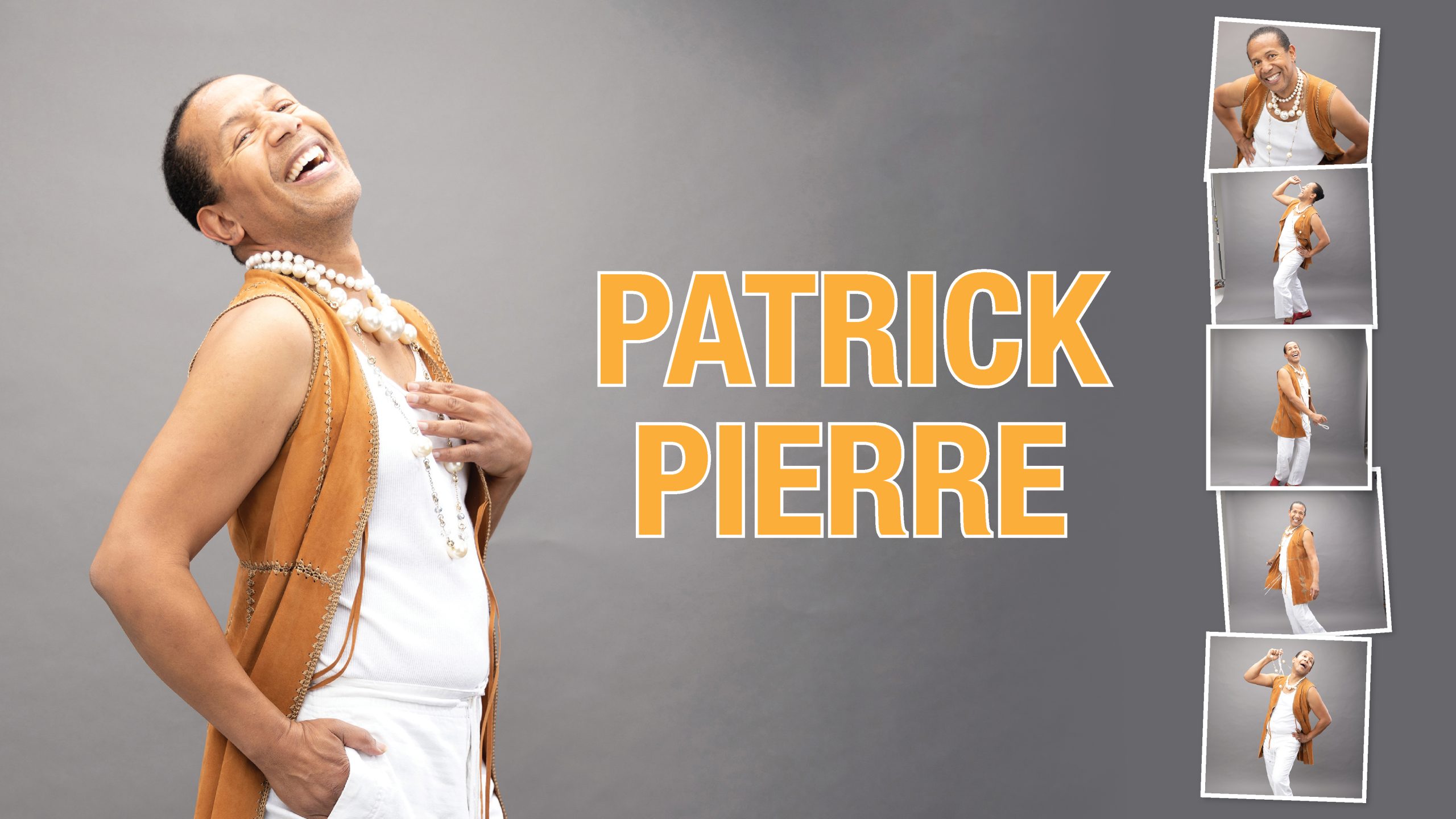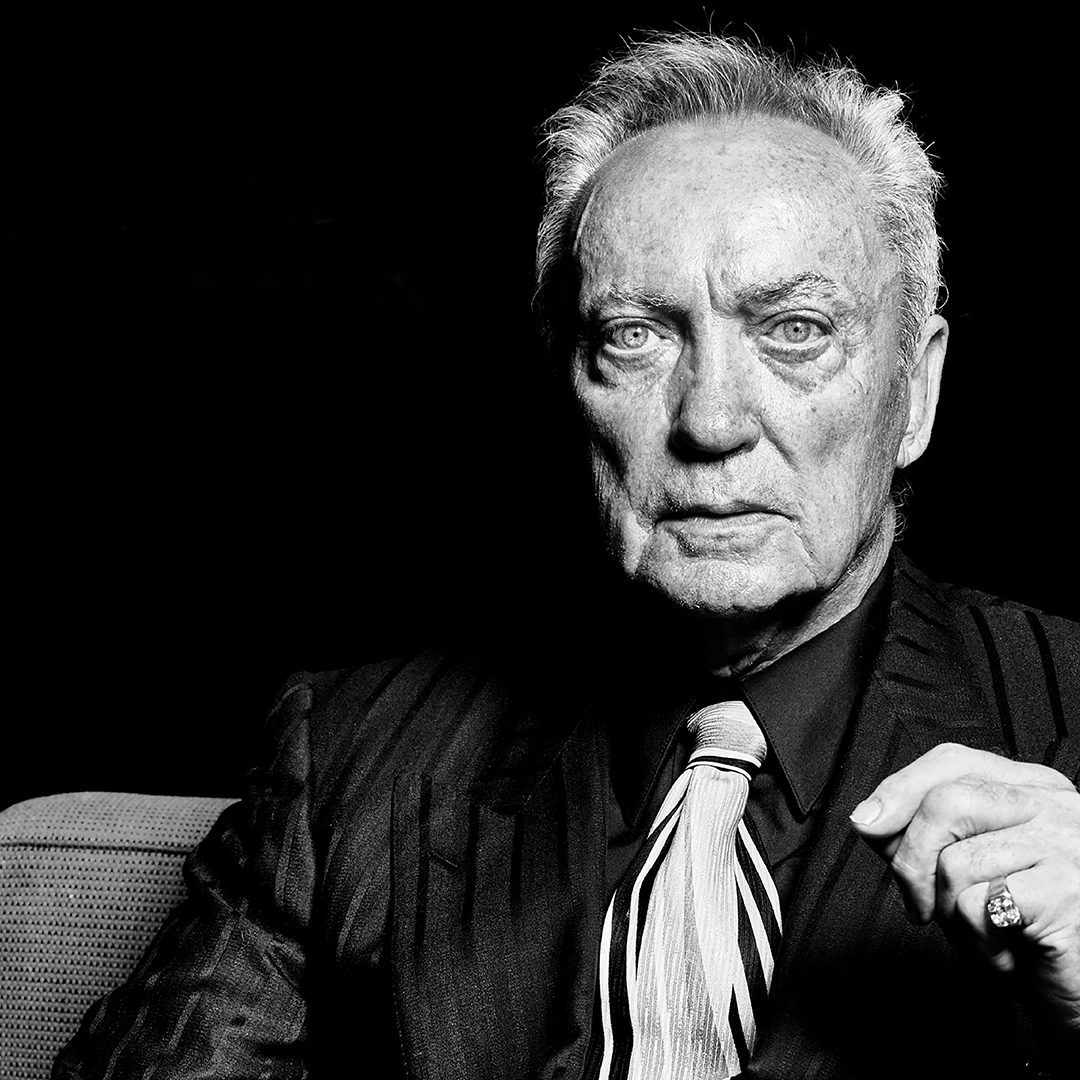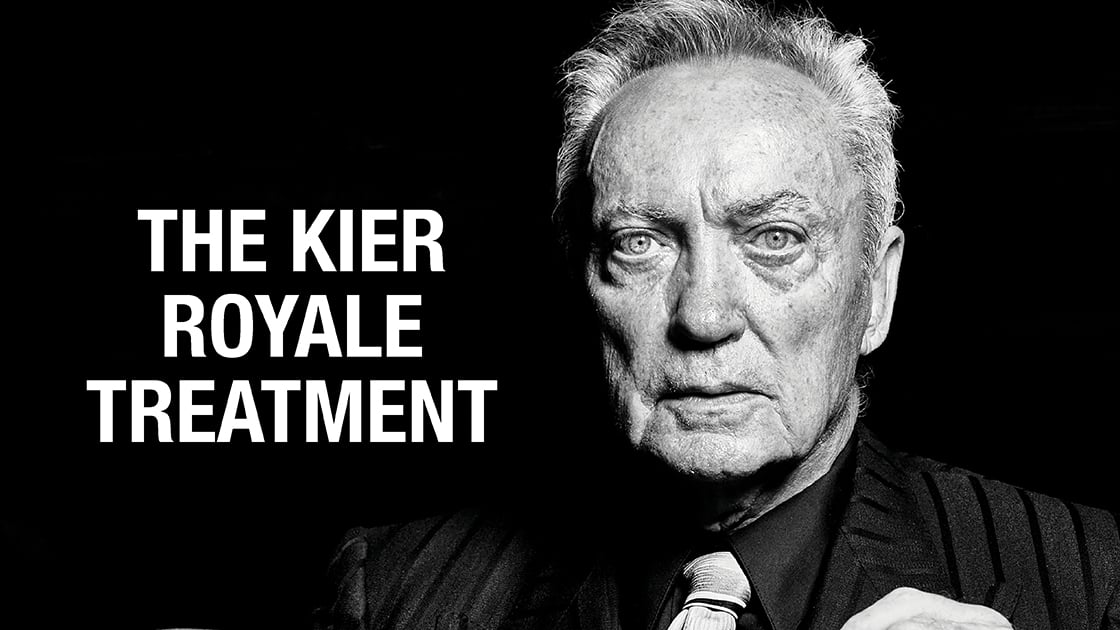
Against All Odds
The average age of a chief operating officer is 51. Corina Velasquez had earned that esteemed title by 36.
As seen in Issue 4 of DAP Health magazine
Words by Kay Kudukis • Photo by Zach Ivey
Being a medical assistant (MA) wasn’t the dream of Corina Velasquez in grade school. She was into poetry and prose. She was good at it too. Won an award and everything. In high school, that dream morphed into one of law school and a seat on the bench. All that changed with one test.
“I dropped out of high school midway through because I got pregnant with my daughter,” Velasquez says. She was 17 when she gave birth. It didn’t take long for her to realize that, domestically, she was in a bad situation. She left the father within two years.
“Statistics say I’d still be at my house on government assistance, but I didn’t let my fear of not being good enough stop me,” she says. She returned to her studies, became a certified phlebotomist, and took a job working in-patient at Eisenhower Health.
But Velasquez had her sights set on becoming an MA, so it was back to school. After a few internships, she got her first paid MA position at Borrego Health’s Centro Medico Cathedral City, which had previously been a private practice. Velasquez was also able to draw blood in the small, one-doctor clinic, where it was hard enough to get a patient through the door, much less go elsewhere for blood tests.
It was a great time in Velasquez’s life. She was 24, had a full-time job in an exciting field, and she’d found love again. They had two daughters, but after 10 years together (three of them married), they divorced. They’re such good co-parents, people think they’re still a couple.
Born in Ventura County, Velasquez completed kindergarten in Coachella after her single mom moved the family of four there, courtesy of a new job. A middle child, she was sandwiched between an older brother and younger sister. Eventually, her mom purchased a mini-mart where Velasquez worked after school and on weekends. That came in handy when she was transferred back to her old stomping grounds, subbing for the Coachella clinic’s MA, Carmen Ruiz, who now pulls double duty as the clinic manager at both Palm Springs Family Health and Desert Hot Springs Specialty Care. Both are Borrego Health centers now under DAP Health’s auspices.
As Velasquez learned more about federally qualified healthcare centers (FQHCs), she asked her mom to refer mini-mart customers to their clinic, emphasizing their zero-discrimination policy, discounted medications, and sliding scale fees. When Ruiz returned from maternity leave, she discovered that, due to Velasquez’s expert outreach, Coachella had gone from treating six patients a day to routinely more than 30.
“I had worked with the company for a couple of years, and it was very different working with Corina,” Ruiz emphasizes. “Very different than working with anyone else. We would just look at each other and I’d say, ‘Did you see what’s going on in the lobby?’ And she’d say, ‘Yeah, I got it.’” Ruiz is referring to drop-in patients and the workload ahead. “Corina knew exactly what I was talking about. She was always going the extra mile, and I was the same way. We made a really good team.”
Velasquez agrees. “Carmen and I had this amazing working relationship where we could communicate without even talking. Just boom, boom! It was awesome.”
When Borrego Health graduated from paper to electronic health records (EHR), it chose to conduct training at the small Coachella facility. Trainers came in but didn’t bring step-by-step learning tools.
“I created screenshots at the nurses’ station so I could remember, because I knew the instructors weren’t going to be there forever,” Velasquez recalls. Shortly thereafter, she happily accepted a promotion to become the trainer of the new system — for all Borrego Health MAs.
Velasquez also began learning about quality and compliance. Soon she was auditing charts, helping with audit tools, and in 2011, was asked to manage a brand-new clinic. She would be stocking, staffing, and problem-solving.
She did so well that it was requested that she find her replacement, and do it all over again. Wet, lather, rinse, repeat. Every clinic, from soup to nuts.
At the same time, changes were going on at the upper levels of the organization. The VP of operations was promoted to COO, the regional director of operations became VP, and Velasquez applied to be — and was appointed — regional director in 2012, where she stayed until her 2015 promotion to VP of patient access.
Her rise to the C suite came in 2021. With Borrego Health then serving more than 120,500 patients (roughly 463,000 annual visits) throughout Riverside and San Diego counties, being chief operating officer was a big job. It’s an even bigger job now that she serves in that capacity at DAP Health. It’s a role that was previously absent at the organization — one created just for her.
“Corina is simply a force to be reckoned with,” says DAP Health CEO David Brinkman. “Her journey is such an inspiring one. She’s a doer whose presence is nonetheless so warm and welcoming. I’m tremendously excited to have her keep doing what she does best for us now that we are one, integrated health care agency.”
Here’s an anecdote from her early years, which shows why Velasquez has been so successful: She was working with a provider who had a reputation for being “a little too direct” (as she gently puts it), when he snapped at her in front of a patient.
“I went into his office when we were done, shut the door, and said, ‘Let that be the last time that happens. I’m here to work with you. So, let’s make this a good day.’ He just looked at me, then smiled and said, ‘We’re gonna do just fine.’ After that, it was a really good relationship. At the end of the day, everybody wants the same thing. Sometimes, they just need a different map on how to get there.”
Now 39, Velasquez can look back and offer advice to other young adults, no matter their situation. “Even when you don’t believe in yourself, be curious enough to ask the questions because that can open so many doors to things that you never thought you’d even be in the right vicinity of.”
Before DAP Health’s acquisition of Borrego Health, when things were up in the air, Ruiz one day felt inspired to call Velasquez to say, “I just want to thank you. I know what you’ve done, and what you’re capable of doing. We don’t know exactly what you do for us behind the scenes, but things happen because of you. Good things.”
As it turns out, Velasquez has core values — strength, truth, justice, optimism—that she shares with Wonder Woman. Like Velasquez, Wonder Woman has profound healing, telepathy, and supernatural leadership powers.
Isn’t it interesting that Wonder Woman and Velasquez have never been seen in the same place at the same time. Make of that what you will
